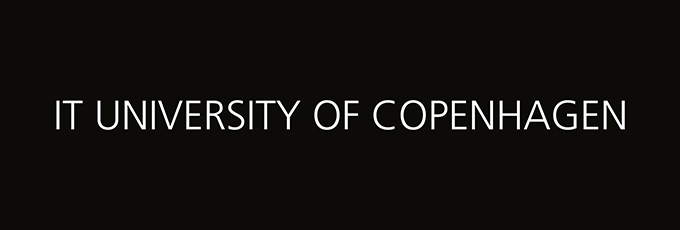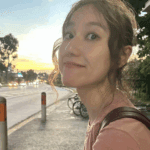When Giorgio Perri received a Nintendo GameCube as a five-year-old in the early 2000s, that sixth-gen gaming console would set the course of his life. “I’ve been telling my parents I want to make games since I was only five,” Perri says.
He continued tinkering with computers, before going on to study design and visual arts at university and later to pursue a Master of Science in Games degree at the IT University of Copenhagen. Then, Scandinavia felt like “the right place” for him. Today, Perri is the co-founder of brainglyph, one half of the indie game development duo working on their first game, Heli.os, a knowledge-based action roguelite.
“ITU has been the best choice I could make. I have learnt invaluable lessons and met amazing people over here,” he says.
The MSc in Games empowers you to create the future of play. It gives you a solid foundation of creative, technical, social, and analytical competences to realise the playful experiences of tomorrow, whether it’s video game, experience design, e-sports or gamification.
Producing any of these takes a complex, multi-team creative process – the programme was designed with this in mind. It sets you up to make a difference in any project that uses game technology or playful design elements.
The master’s degree lets you choose from two tracks. The first is the Technology Track, ideal if your dream is to work as one of they many types of programmers that are needed in the games industry. This track will introduce you to various AI algorithms and game-specific technologies in specialised courses, such as Graphics Programming, High-Performance Game Programming, and AI for Games and Simulations.

The MSc in Games transforms students into the leaders of the future of play. Source: IT University of Copenhagen
The other track is Design. Here, you will be trained to think critically and creatively as you explore the psychology behind why and how we play and get creative in leveraging potential of new technologies in creating interactive experiences. Courses like Psychology of Play and Games, Advanced Topics in Game Studies, and Play Lab will pave your way to becoming a game, gameplay, or level designer, producer, QA manager, or game researcher.
During your third semester, you can join the National Academy of Digital, Interactive Entertainment (DADIU) programme. It’s a joint collaboration between universities and art schools in Denmark with the global games industry.
For four months, you will have the opportunity to work with skilled game developers from different backgrounds and education levels to create and develop digital games. The programme is a simulation of a real game development company, where you can choose to take on the role of either an art director, audio engineer, CG artist, composer, game & level designer, game director, game programmer, lead programmer, producer, technical artist, or visual designer.
“A course that had a large impact on my approach was DADIU in the third semester, where I was fortunate enough to be selected as game director,” says graduate Søren Skouv. “It taught me a lot about managing a team, and I’m really proud of how the collaboration turned out between everyone on the team, and I feel really lucky to have had the chance to direct so many awesome people. I also learned the importance of clear direction and communication of vision by making a lot of mistakes.”

IT University of Copenhagen’s ITU NextGen brings ideas, students, and industry figures together in one dynamic hub. Source: IT University of Copenhagen
Bringing innovators together
“Perri and Skouv are now partners in their game startup brainglyph. They are supported by ITU NextGen, which is the innovation & startup hub at ITU, where students get together through events and activities “There was no entrepreneurial course or advice in the [MSc] programme, but we have gotten immense and invaluable help from the NextGen startup hub,” Perri says. “The biggest boons I have gotten from the programme in relation to brainglyph are definitely network connections and technical knowledge. [What’s more] our flagship game, which we are currently working on, called Heli.os, was born as our master thesis project, and the help from our peers and supervisor has been crucial to get to where we are today.”
For Skouv, NextGen has been super helpful and accommodating from their first 10 minutes there. He remembers the CEO coming down to talk to them and the “incredibly informative sessions” with their business developer. “We had the chance to pitch at various events and work on these with the business developer, which helped a ton for when we had to pitch in order to get Innofounder (a 12-month full-time course for entrepreneurs with a higher education),” he says.
Whether you call it a startup bootcamp or a space for the ambitious, what NextGen does well is equipping students to become future entrepreneurs. One-to-one consultations, fundraising guidance, and strategic partnerships with external players form the backbone of its offerings.
“NextGen has given us a place to work for our first year of business development free of charge and this is only part of the incredible help we have gotten from them. Christian Marcus, the team’s business developer has spent tens of hours with us, working on our funding applications, pitches, presentations, and so on,” adds Perri. “We wouldn’t have gotten our first big fund without them.”
Here, ventures can and do take shape — brainglyph is living proof.
Follow IT University of Copenhagen on Bluesky, Facebook, Instagram, LinkedIn, and YouTube.














